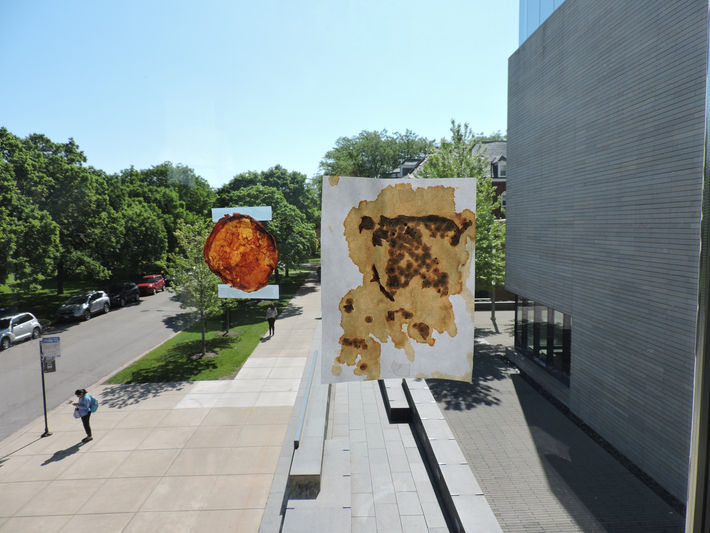30 SCREWS
EXHIBIT
Spring 2019
A culminating display of material experimentation with coffee grounds. Arranged as a café for all the senses with fungus as the primary inhabitant.
CONCEPTUALIZATION
The cafe is almost entirely constructed from biomaterials (wood, coffee grounds, agar agar, paper) which will readily biodegrade overtime, leaving behind only 30 metal screws and 4 glass jars. The piece explores the boundaries between living and nonliving, man-made and nature-made. It displays objects of human production overcome by naturally occurring mold, elevating the mold as a productive/destructive component and bringing to light the power struggle between humans and fungi.

COMPONENTS
Coffee ground carpet – used coffee grounds
Planter table – wood, 24 screws, coffee grounds, sawdust, coffee filters, oyster mushroom mycelium
2 stools – coffee grounds, agar agar, alginate, glycerol, wood, 6 screws
Living jars – water, sugar, coffee, kombucha SCOBY
Wall art – paper, wood, mold, SCOBY
Hanging fixture – coffee filters, agar agar

SUSTAINABILITY
Coffee grounds are used to make coffee globally and then discarded. As a mass produced bio-waste product, they have the potential to be repurposed into new materials.

SCIENCE
Mold is a fungus that grows in the form of multicellular filaments (hyphae) to form an organism (mycelium). Mold requires a moist environment and organic material to grow on. My coffee ground experiments were an ideal habitat.
The planter table contained oyster mushroom (also a type of fungus) mycelium grown on a substrate of coffee grounds and sawdust. Mushrooms derive all their energy from the growth medium.
Kombucha is made from the fermentation of tea (or coffee!) by a symbiotic culture of bacteria and yeast (aka: SCOBY). The yeast utilize sugar to produce their energy through glycolysis and alcohol fermentation, producing ethanol and CO2 as biproducts. Bacteria in the SCOBY convert the ethanol to acetic acid which gives the kombucha a sour vinegar taste. The SCOBY grows as it feeds, forming a solid film on the top of the liquid.


